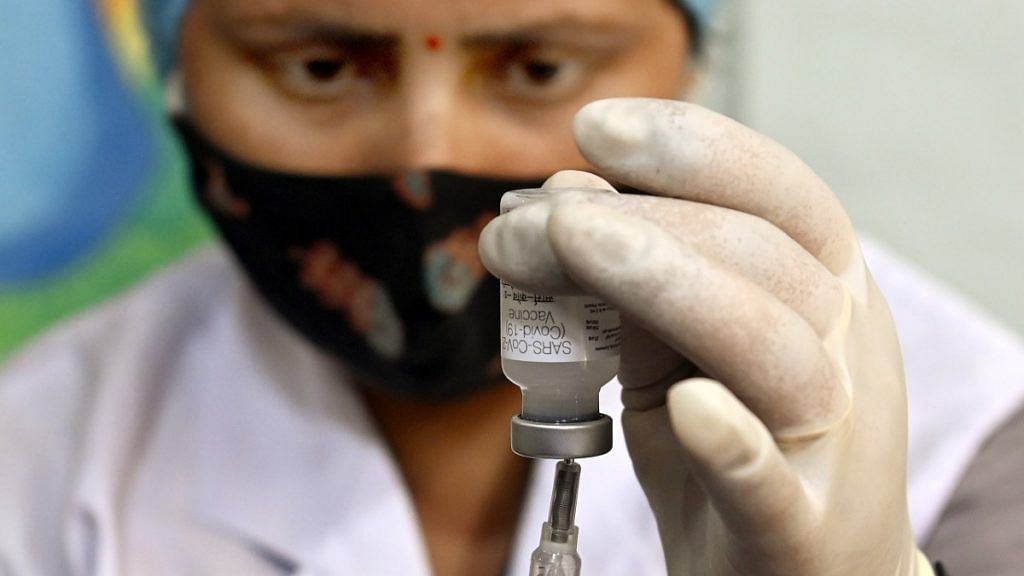New Delhi: The Covid-19 vaccine alters the menstrual cycle, albeit temporarily, a peer-reviewed study by researchers at the Norwegian Institute of Public Health (NPIH) has found.
For this study, researchers examined 5,688 women between the ages of 18 and 30 and found that “heavier-than-normal bleeding” was most commonly associated with Covid-19 vaccination, with 13.6 per cent of participants reporting it post vaccination compared with 7.6 per cent who reported it pre-vaccination.
Findings of the study, published in Science journal, also show that participants who were administered both doses of the vaccine saw their menstrual cycles increase by 2.32 days only to return to normal within two months.
Even in the past, menstrual changes have been linked with vaccines, like typhoid. This variance tells us that it is a specific immune response, not the type of vaccine or a specific vaccine ingredient that triggers a change in the cycle.
However, in the case of the Covid-19 vaccine, there is not enough evidence to suggest that it is an immune response. Read more
Also Read: Scientists find fish that stress eat their own babies & spot a black hole gobbling up a star
A turtle the size of a small car
It is difficult to imagine a turtle so large that it is the size of a small car, a MINI Cooper to be precise. Researchers in Northeastern Spain last week found the remains of a turtle named Leviathanochelys aenigmatica that was about 12 feet (3.7 metres) long, weighed a little under two tons and lived during the Cretaceous period – the final chapter in the age of dinosaurs.
It is still not the largest turtle to have ever lived, second to the Archelon, which lived approximately 70 million years ago and was the size of a Toyota Corolla, scientists say.
The Leviathanochelys appears built for the open ocean, returning to land only rarely, for instance to lay eggs. ‘Bony bulges’ were found on the creature’s pelvis, different from any other turtle, thus it also represents a freshly discovered lineage. Read more.
Meteorite may have brought water to Earth
Researchers from London’s Natural History Museum and the University of Glasgow studied a meteorite in England’s Gloucestershire region and discovered it contained water similar to that found on Earth.
The team, which measured the ratio of hydrogen isotopes in the water, found that it resembled the composition of water on Earth, said a press release from the Natural History Museum.
Published in the journal Science Advances, the findings of their study reveal that extraterrestrial rocks may have brought essential chemical components like water to Earth billions of years ago, leading to the forming of oceans and all life on the planet.
The meteorite has also been called a “lucky” find due to its relatively small size. Read more.
Microbes in melting glaciers
Vast quantities of microbes are being washed downstream as glaciers melt at alarming speeds, a new peer-reviewed study has found.
Scientists part of the study told The Guardian that the rapid melting of ice as a result of the climate crisis meant the glaciers and the unique microbial ecosystems they harboured were “dying before our eyes”.
The microbes being washed away could fertilise entire ecosystems, but further research needs to be done in order to substantiate this. Certain microbes could also be a future source of useful biological molecules, such as new antibiotics.
Findings of the study, published in the journal Communications Earth & Environment, reveal that microbes being flushed out would deliver an average of 650,000 tonnes of carbon a year for the next 80 years in the northern hemisphere, excluding the Himalayas, which were not studied.
Scientists believe if emissions are cut, thereby slowing down global warming and the melting glaciers, the mass of microbes released would be reduced by about a third. Read more.
(Edited by Amrtansh Arora)
Also Read: Chinese rocket debris shuts down Spain airspace & the mosquito behind Ethiopia’s malaria epidemic
